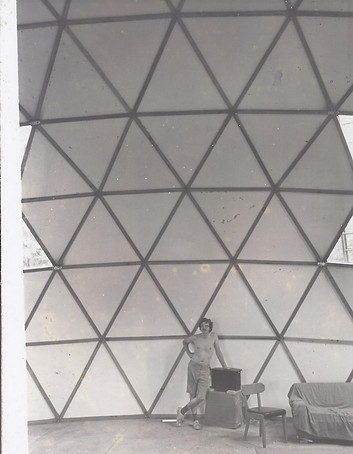Bucky & Dome Math


Richard Buckminster (Bucky) Fuller
Bucky and I both exhibited our domes at the University of Massachusetts' Toward Tomorrow Fair in 1978. Polaroid photo. My dome is the detailed wood frame. Bucky's Fly's Eye dome is off to the right.
I am still inspired by Bucky's speeches and books, and by his boundless enthusiasm for meaningful change.
And I wish he were alive now for the internet connectivity he predicted




In 1954 Bucky was granted a US Patent for his "Geodesic Dome", which was identical to the one built by Walther Bauersfeld in Jena, Germany in 1922.
To Bucky goes credit for teaching the world a new way to build.
Sadly, though, there is a flaw with geodesic math itself which ruins much of the economy it sought to begin with.
"Geodesic" math is a spherical sub-division of Plato's 2,400 year old 20-sided solid, the icosahedron. Although subdividing major triangles yields a minimum number of different strut sizes, the icosahedron-based grid restriction results in undulating strut rows, clumsy riser walls, box-outs for sliding doors, and impossible windows.
Geodesic domes do not work for residential-sized construction.
Allard math is original and solves these problems. It, too, is based loosely on the icosahedron. However, I used spherical trig to define lengths, which then yields all angles.
Strut rows are placed horizontally. Any triangle can be either a window or a wall.
The Allard characteristic bulge takes the dome out for comfort and then returns to the second floor at the same diameter as the first. Nothing is lost and the bulge provides a feeling of roominess.
Door frames are integral, windows are perfect-fitting triangles.


West Stockbridge, Massachusetts 1974



Walther Bauersfeld and his 1924 Dome in Jena, Germany
Drew, your vision and courage has inspired me.
50" diameter redwood model of Drew's Dome